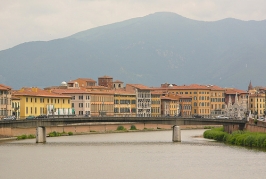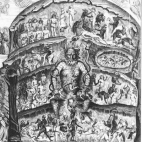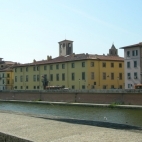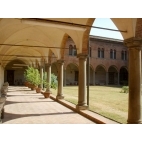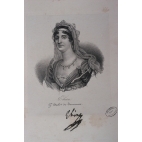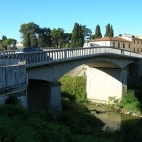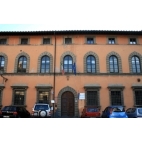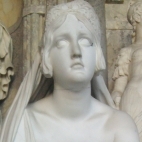Pisa
An Etruscan and Roman colony, Pisa was part of the Lombard kingdom, the Carolingian Empire and the Kingdom of Italy. The Middle Ages coincides with a period of great economic, political and artistic development. Under the Maritime Republic, the construction of the Cathedral, the Baptistery, and the Leaning Tower began, giving rise to the urban design of Pisa’s historic centre on the banks of the Arno, the great communication artery. Pisa is the only Ghibelline city in Tuscany, and was often in conflict with the papacy.
The decline of the seaside town, with the defeat in the waters of Meloria (1284), became more evident with the silting up of the harbour.
Recovery began in the second half of the sixteenth century with the development of the University and the institution of the Order of the Knights of Santo Stefano. With the Medici rule, Pisa went through a period of calm, which continued until 1859 with the House of Lorraine, who periodically stayed in the city.
During the Napoleonic period, Pisa was first a part of the Kingdom of Etruria (1801-1807), and later France. In 1848, the volunteers of the University battalion taking part in the war against Austria, distinguished themselves in the battle of Curtatone.
During the Second World War, it suffered heavy losses and destruction due to strategic bombing, followed by a difficult period of reconstruction.
It is the birthplace of Galileo, and some of the most brilliant personalities in Italian and European culture have been involved with its University.
Following Napoleonic places, stories, and ideas is a very intriguing and original way to discover the city of Pisa and its surrounding territory.
The starting point of the journey should be none other than Piazza dei Cavalieri, in Pisa, where you can find the Scuola Normale Superiore, which was established by decree by Napoleon Bonaparte on 18 October 1810.
From the Piazza, which was redesigned by Vasari as a citadel of Medici power, you traverse the historical city centre to reach the banks of the Arno River, where the Palazzo Lanfranchi, now the Museum of Graphic Arts, served as the residence of Leopold Vaccà Berlinghieri, a senior officer in Napoleon’s army.
After travelling along the banks of the Arno from North to South – admiring, among other things, the San Matteo National Museum, the Palazzo Agostini, the Royal Palace, the Church of the Thorn [Chiesa della Spina] and the Palazzo Blu – you then proceed to Corso Italia for a stop in front of the Palazzo Mastiani, home of the most famous gathering place in Pisa, which was also frequented by Paolina Bonaparte and the Napoleonic Nobility.
After leaving Pisa, the first leg of our Napoleonic journey is Pontedera, but we must first cross the bridge over the River Era, which was built in 1810 and designed by French Architect Garello. Though the bridge was destroyed during the Second World War, it has since been faithfully reconstructed. Pontedera is the birthplace of the Vespa, and the Piaggio Museum (free admission) allows you to retrace the entire history of this symbol of “Made in Italy”.
From Pontedera you take the Wine Route of the Pisan Hills to get to Villa Baciocchi in Capannoli, which now houses the Zoological Museum and the Archaeological Documentation Centre, to the Vaccà Berlinghieri house museum and the Temple of Minerva Medica in Montefoscoli. You will finally reach San Miniato, the Truffle City, where Canon Philip Bonaparte used to reside. This was Napoleon’s uncle who came to visit him in 1778 and again in 1796. At the Academy of Euteleti you can find a plaster cast of Napoleon Bonaparte’s face.
From San Miniato you pass through Terricciola, the city of wine, and past the Theatre of Silence [Teatro del Silenzio]in Lajatico, the birthplace of Andrea Bocelli, to finally arrive at Volterra, a treasure trove of Etruscan, Roman, Medieval, and Renaissance culture.









